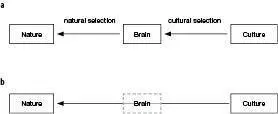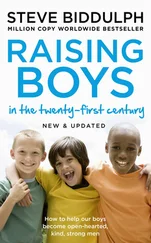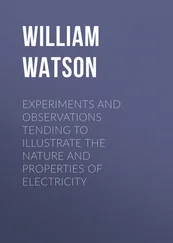Mark Changizi - Harnessed - How Language and Music Mimicked Nature and Transformed Ape to Man
Здесь есть возможность читать онлайн «Mark Changizi - Harnessed - How Language and Music Mimicked Nature and Transformed Ape to Man» весь текст электронной книги совершенно бесплатно (целиком полную версию без сокращений). В некоторых случаях можно слушать аудио, скачать через торрент в формате fb2 и присутствует краткое содержание. Год выпуска: 2011, Издательство: Perseus Books Group, Жанр: Старинная литература, на английском языке. Описание произведения, (предисловие) а так же отзывы посетителей доступны на портале библиотеки ЛибКат.
- Название:Harnessed: How Language and Music Mimicked Nature and Transformed Ape to Man
- Автор:
- Издательство:Perseus Books Group
- Жанр:
- Год:2011
- ISBN:нет данных
- Рейтинг книги:5 / 5. Голосов: 1
-
Избранное:Добавить в избранное
- Отзывы:
-
Ваша оценка:
- 100
- 1
- 2
- 3
- 4
- 5
Harnessed: How Language and Music Mimicked Nature and Transformed Ape to Man: краткое содержание, описание и аннотация
Предлагаем к чтению аннотацию, описание, краткое содержание или предисловие (зависит от того, что написал сам автор книги «Harnessed: How Language and Music Mimicked Nature and Transformed Ape to Man»). Если вы не нашли необходимую информацию о книге — напишите в комментариях, мы постараемся отыскать её.
Harnessed: How Language and Music Mimicked Nature and Transformed Ape to Man — читать онлайн бесплатно полную книгу (весь текст) целиком
Ниже представлен текст книги, разбитый по страницам. Система сохранения места последней прочитанной страницы, позволяет с удобством читать онлайн бесплатно книгу «Harnessed: How Language and Music Mimicked Nature and Transformed Ape to Man», без необходимости каждый раз заново искать на чём Вы остановились. Поставьте закладку, и сможете в любой момент перейти на страницу, на которой закончили чтение.
Интервал:
Закладка:
And here is the deep secret underlying music, which is the topic of Chapters 3, 4, and 6: music sounds like humans moving and behaving (usually expressively) . Notice how general the notion of “nature” is here. It isn’t the sounds of people’s heartbeats, or heavy breathing, or missionary-style sex, or skipping—it is the sounds of humans behaving. When we carry out behaviors we tend to make noise, and our auditory system can infer a lot about each other’s behavior from the noise. Music has the signature auditory structure of humans doing stuff, and can thus get into our brains by tapping into our auditory recognition mechanisms for identifying the actions of other people. No music-processing mechanisms are required. This secret code of sounding like expressive human movers is what allows music to flow into our auditory system and be understood by it, even though we possess no special brain gears for processing music.
Although it is the ancient secret codes lying beneath speech and music that I’ll be whispering about in this book, this is not the first time I have written about deep secrets of this kind. In my previous book, The Vision Revolution , I wrote about (among other topics) another ancient secret, the one explaining how we hominids came to have a written history. And the secret is this: writing looks like three-dimensional scenes with opaque objects . Writing looks like nature, but as before, nature of a very general kind—no images of acacia trees or termite mounds are needed. Writing has come to mimic the contour combinations occurring in natural scenes with opaque objects, and in such a way that written words mimic the structure of visual objects. Writing gets into our brains by harnessing our visual object-recognition mechanisms. The secret code of looking like nature is what allows writing to be read by us hominids without any reading mechanisms in our brains.
The “nature” stories of the origins of speech, music, and writing are, then, not in the least about acacia trees or the other particulars in the rummage shop of our ancestors, but rather about solid-object physical events, human movement sounds, and opaque objects in a three-dimensional world. “Nature” is a highly general notion, just what is needed to make theoretical headway and empirical testing possible and practical.
And although the notions of “nature” I will rely on are very general, they are not so general that they include everything. For example, “solid-object physical events” covers a wide swath, but it doesn’t cover sounds made by air and water. And “opaque objects in a three-dimensional environment” is fundamental, but a habitat with semitransparent objects (like clouds at high altitudes) would not be included.
Distinguishing between the surface features of habitats (which vary wildly from habitat to habitat) and the core features (found in most or all habitats) is helpful in understanding why, even if writing, speech, and music have underlying core similarities, they nevertheless come in such tremendous variety. If nature were all core—if it had little or no variability across habitats—then our visual and auditory systems would have evolved to be competent at processing just the very specific kinds of stimuli in the world. Language and music that harnessed such a brain would be expected to have a very specific and consistent surface structure, something they do not, in fact, have. If, instead, as is the case, there is a small core of invariant structure to nature, yet loads of variability across habitats, one would expect us to end up with brains that are more open-minded about what they’re willing to accept. Our brains would be most competent at processing stimuli that have the core signature, but in other respects, our brains would be open to many variants. Language and music that harnessed this kind of open-minded brain would be expected to take widely varying shapes across cultures, but to share certain similarities. This is a much more accurate description of language and music as found on Earth: subject to large differences across cultures, but sharing certain core structural characteristics across cultures.
You have now gotten a peek at the ancient secret codes hidden inside speech and music. Hopefully you can appreciate their generality, and appreciate why it might be that the natural structure in speech and music has stayed hidden from us. In the next and final section of this chapter, I will be as clear as I can about how my nature-harnessing theory differs from other stances on the origins of language and music, and I will justify why we should expect language and music to have nature instincts (i.e., designed to mimic nature) rather than just brain instincts (i.e., designed to be well shaped for the brain).
Purps vs. Quirks
In the Introduction, I touched upon two standard, contrasting viewpoints on origins, the first being that we evolved brains specialized for language and music (i.e., we have instincts for these things), and the second that, on the contrary, we evolved to be general-purpose, universal learning machines that handle these artifacts because we can learn lots of unusual stuff. I suggested that language and music seem unlikely to be instincts because writing, too, reeks of instinct, but is definitely not an instinct. But I also intimated that there is a wealth of data and argument—summarized and argued convincingly in Pinker’s books, for example—that we do not possess blank-slate brains. How, then, are predisposed brains like ours able to learn any human language and comprehend music—among the most complex and sophisticated computational tasks on Earth—if we’re neither designed specifically for it nor particularly impressive general learners?
The answer is that once culture got up and running, there was a new blind watchmaker in town. Cultural evolution could, over comparatively short periods of time, fit language and music into the shapes our grooved (non-blank-slate) brains are able to learn. It is not so much that our brains learn language and music, but rather that culture learned how to package language and music so that they fit right into our brains. Culture learned how to harness us.
Despite the title of this book, there is nothing new about the idea that we are harnessed by culture, that cultural artifacts may have been selected to be structured well for our brains. What is new here is that I am putting forth specific proposals for how culture actually goes about harnessing us. Saying that language and music might be shaped for the brain doesn’t take us very far in understanding the shape of language and music, because we don’t have a good understanding of the brain. What we need is a general theory of harnessing. And nature-harnessing is the theory I am proposing.
Earlier I said that language and music have evolved to possess a brain instinct, rather than the brain having evolved to possess language and music instincts. But in a sense, in this book I am arguing that language and music have, not a brain instinct, but a nature instinct. Language and music carry in them the structure not of the brain so much as of nature, which of course is just right for the brain—because the brain is just right for nature (see Figure 1).

Figure 1. (a)The brain was shaped by natural selection for nature, and culture was shaped by cultural selection for the brain. (b)By shaping culture to look like nature, culture will tend to end up shaped well for the brain. And, importantly, we scientists can hope to get a handle on this without having to understand the detailed brain mechanisms. The arrow cutting through the brain and going from culture to nature is meant to symbolize my nature-harnessing theoretical approach, which drives this book. It means that my theory will pretend there is a single arrow like this, where culture has been selected to be shaped like nature. This is a simplification of the more detailed picture in (a), and the greater simplicity is a boon to a scientist because the most complicated object in the universe—the brain—has been removed from the “equation.”
Читать дальшеИнтервал:
Закладка:
Похожие книги на «Harnessed: How Language and Music Mimicked Nature and Transformed Ape to Man»
Представляем Вашему вниманию похожие книги на «Harnessed: How Language and Music Mimicked Nature and Transformed Ape to Man» списком для выбора. Мы отобрали схожую по названию и смыслу литературу в надежде предоставить читателям больше вариантов отыскать новые, интересные, ещё непрочитанные произведения.
Обсуждение, отзывы о книге «Harnessed: How Language and Music Mimicked Nature and Transformed Ape to Man» и просто собственные мнения читателей. Оставьте ваши комментарии, напишите, что Вы думаете о произведении, его смысле или главных героях. Укажите что конкретно понравилось, а что нет, и почему Вы так считаете.












